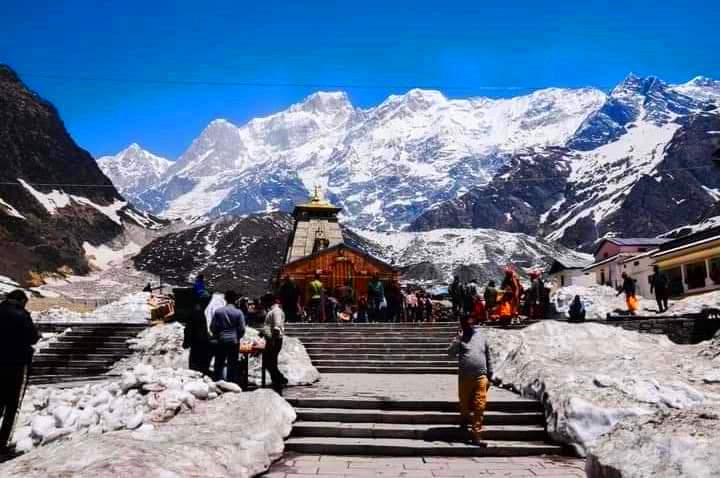Panch Kedar refers to five sacred shrines dedicated to Lord Shiva in the Garhwal region of Uttarakhand, India. These temples are associated with a significant legend from the Mahabharata and are highly revered in Hinduism. The temples are situated in the Kedar Valley of the Himalayas, and their worship is an integral part of the Shaivite tradition.
The Legend Behind Panch Kedar
According to mythology, after the Kurukshetra war, the Pandavas sought forgiveness from Lord Shiva for killing their relatives and others in the war. Shiva, unwilling to forgive them easily, disguised himself as a bull (Nandi) and roamed the Garhwal Himalayas. When the Pandavas recognized him, Shiva dived into the ground to avoid them. Different parts of his body appeared at five locations, which are now revered as the Panch Kedar temples.
The Five Temples of Panch Kedar
Kedarnath – Part of Shiva’s Body: The hump of the bull.
Significance: It is the most famous of the Panch Kedar and one of the twelve Jyotirlingas. The temple is located at an altitude of 3,583 meters (11,755 feet) and is considered the main shrine of Lord Shiva in the region.
Location: Near the Mandakini River in the Kedarnath Valley.
Madhyamaheshwar (Madmaheshwar) – Part of Shiva’s Body: The navel and stomach.
Significance: The temple is nestled in a lush valley and surrounded by snow-capped peaks. It is located at an altitude of 3,289 meters (10,790 feet).
Location: Near Ukhimath.
Tungnath – Part of Shiva’s Body: The arms.
Significance: It is the highest Shiva temple in the world, situated at an altitude of 3,680 meters (12,073 feet). The temple offers panoramic views of the surrounding Himalayan peaks.
Location: Near Chopta, often called the “Mini Switzerland” of India.
Rudranath – Part of Shiva’s Body: The face.
Significance: The temple is set amidst dense forests and alpine meadows. Pilgrims need to trek through scenic landscapes to reach this temple, which is located at an altitude of 2,286 meters (7,500 feet).
Location: Near Gopeshwar.
Kalpeshwar – Part of Shiva’s Body: The hair or locks (jata).
Significance: This is the only Panch Kedar temple accessible throughout the year. The temple is at a relatively lower altitude of 2,200 meters (7,217 feet).
Location: Near Helang and Urgam Valley.
Spiritual and Cultural Significance
These temples symbolize the unity of nature and spirituality, as their remote and scenic locations enhance their mystique. A pilgrimage to all five temples is considered highly auspicious and spiritually rewarding.
The journey to the temples involves trekking through rugged Himalayan terrain, which adds to the physical and mental purification process. The Panch Kedar Yatra is not only a religious experience but also an adventure through the serene beauty of the Himalayas.

